International Heritage Centre blog
Salvation and Suffrage
Salvation and Suffrage
The arrival of February 2018 brings with it the centenary of the parliamentary act that, after 21 years of lobbying, permitted partial female enfranchisement. From its establishment in 1865, The Salvation Army, like many other religions, has retained a non-political stance, yet, unlike most religions, it has also had a policy of gender equality enshrined at the centre of its constitution. In light of this year’s centenary, the contrast between The Salvation Army’s stance on gender equality and its avoidance of political involvement at a national level begs investigation into the relationship between this radical evangelical movement and the suffrage campaign at the fin de siècle.
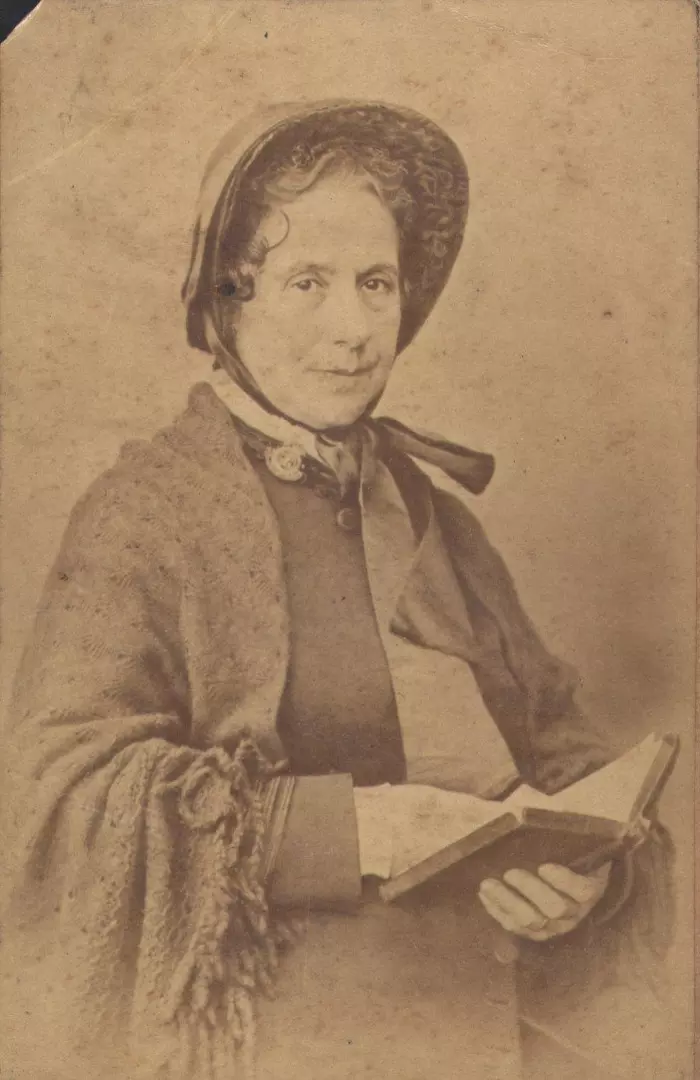
Born in 1829, Catherine Booth belonged to a generation of women who were raised for the purpose of marriage and motherhood, yet by the age of 19 she was already challenging the widely accepted theory of woman’s inherent inferiority that fuelled this biologically deterministic role. Controversially, she attributed woman’s supposedly ‘lesser’ abilities to a lack of sufficient training and education that rendered her ‘anything but an help mate to man’. In accordance with her convictions and in defiance of cultural expectation, Catherine followed her faith into the public sphere, pioneering the place of women in religious ministry firstly through the Christian Mission and then The Salvation Army. Working in the public sphere signalled her rebellion against the Victorian ideal of womanhood that confined women to the private (domestic) sphere, whilst her intellectual written responses to those who publicly challenged her beliefs demonstrated her active and persistent engagement in wider public discourse on women’s place and purpose.
In her 1859 pamphlet, Female Ministry, she argued that: ‘God has given to women a graceful form and attitude, winning manners, persuasive speech, and, above all, a finely toned emotional nature, all of which appear to us eminent natural qualifications for public speaking’. Through this belief in women’s importance due to ‘essential differences’ between the sexes, Catherine Booth, whether politically motivated or not, implicitly aligned herself with the ‘equal but different’ branch of first wave feminism that became popular in the early 20th century.
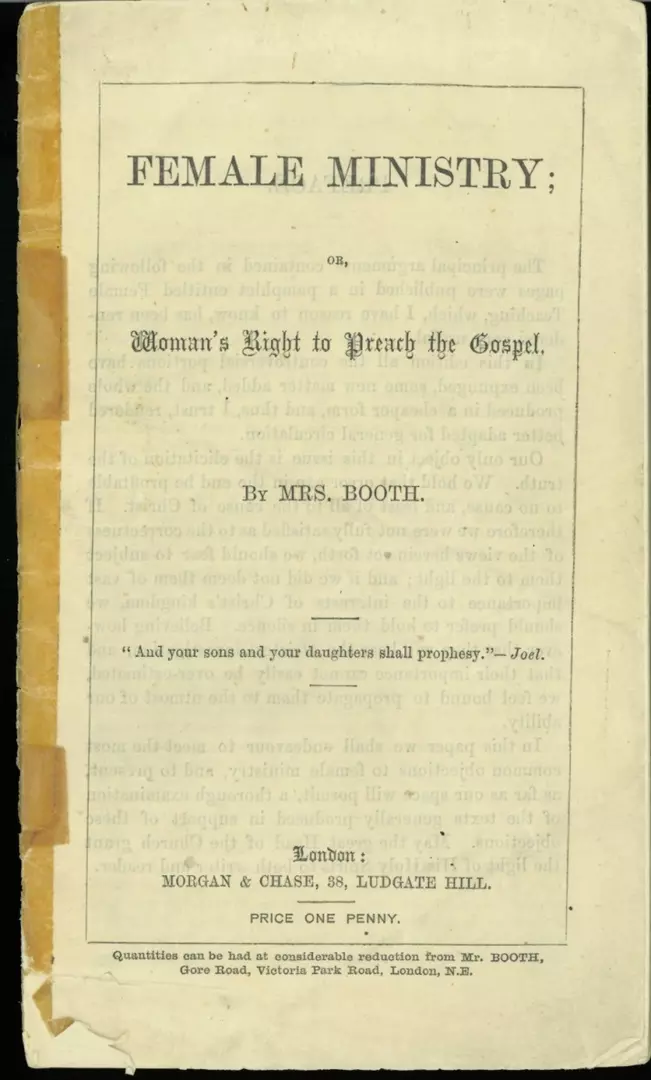
As a result of her hard work and influence, when the first conference of the Christian Mission was held in 1870, a clause was included that cemented Catherine’s vision for women’s ministerial rights at the centre of Salvation Army policy:‘Godly women possessing the necessary gifts and qualifications shall be employed as preachers…and they shall be eligible for any office, and to speak and vote at all official meetings’.
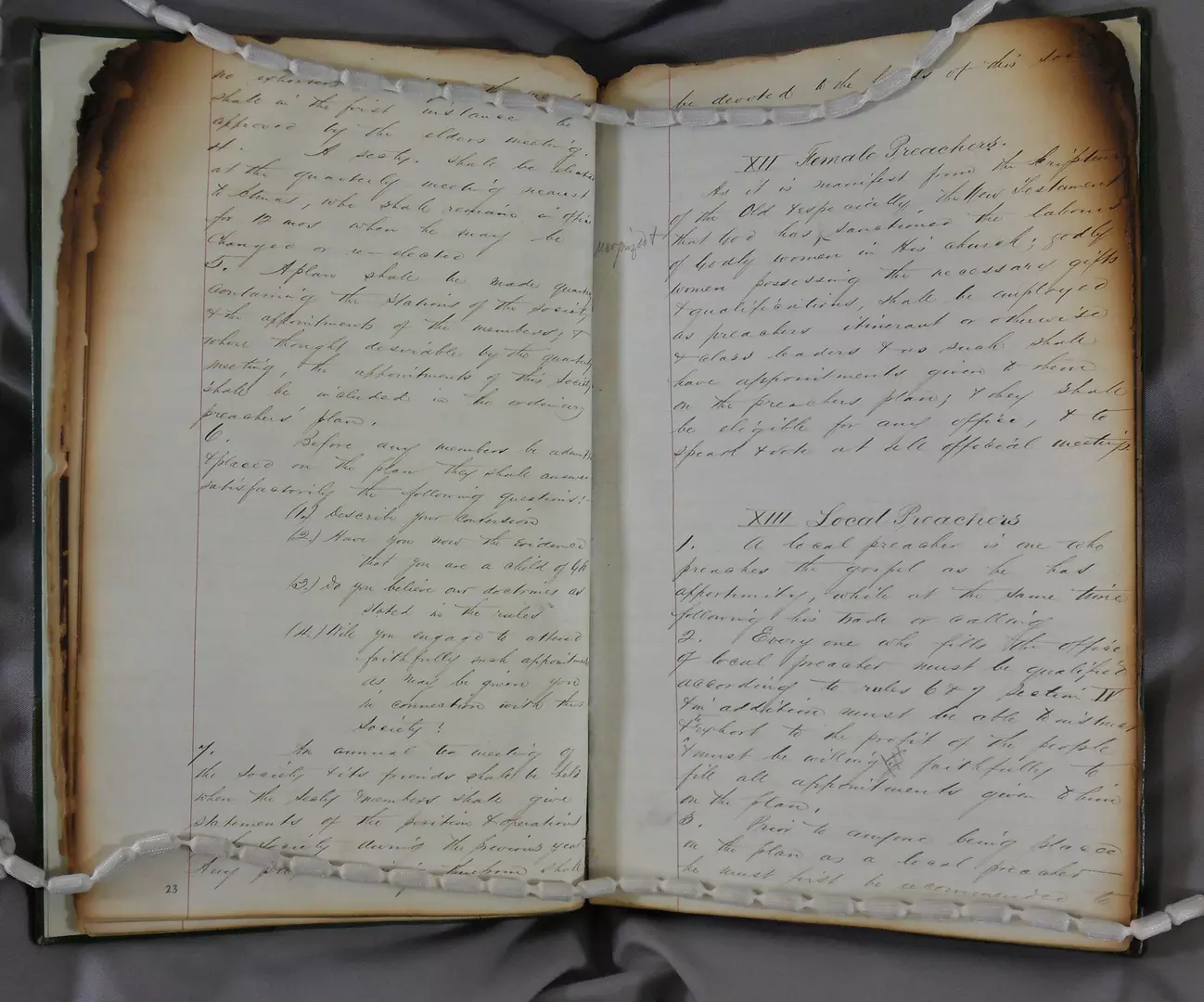
Thus, while religion had been ideologically ‘feminised’ throughout the 18th and 19th centuries, Catherine Booth was instrumental in bringing gender to the forefront of ecclesiastical discourse through her platform in The Salvation Army. Furthermore, in 1853 she was recorded as commenting that it would be ‘many more years’ before there would be change to the legal and social position of women but it remains unclear as to how far her support for the matter extended beyond the bounds of religious ministry.
However, the activities of the women’s movement did not completely escape the attention of Salvationists in the early 20th century. In April 1912 The War Cry published an article that, while carefully avoiding any political discourse, expressed clear and enthusiastic support for the aims of the suffrage campaign. The article stressed that the women’s movement, as ‘one of the mightiest movements in our land’, owed a ‘great deal’ to The Army in having as one of its ‘leading principles…the right of women to an equal share with men’ – a statement that drew a direct parallel between Salvationist principles and those adopted by first wave feminists.
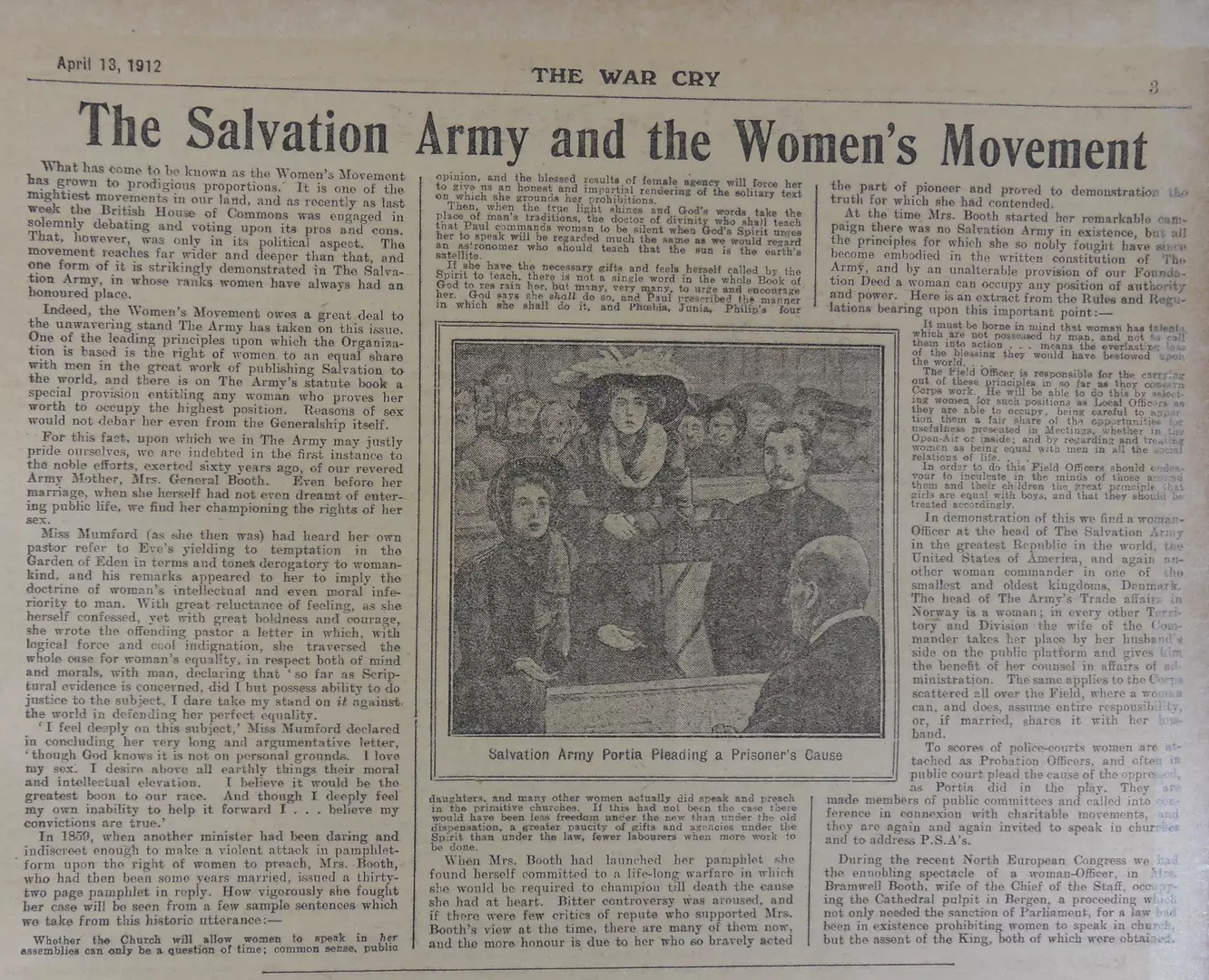
It is thus unsurprising that The Salvation Army attracted members who also became strongly invested in the suffrage movement. Edith Mary Watson [née Wall], Sarah Jane Baines [née Hunt] and Sarah Maclardie Amos [née Bunting] were three women whose gender politics, religious beliefs and socialist principles led them not only to become involved in The Salvation Army and the Women’s Movement, but also the Labour Movement at the turn of the century.
Edith’s conversion took place while she was pursuing a vocation as a nurse in South Africa. After returning to East London (the birthplace of The Salvation Army and the location in which she had spent her childhood) her beliefs took a new direction through becoming strongly involved in the pacifist and socialist leaning branch of the women’s movement, the Women’s Freedom League. Following this, her combined beliefs concerning rights for women and the working classes led her to an active role within the Independent Labour Party which had also accepted women and men upon equal terms from its formation in 1893 and publicly supported the campaign for female suffrage from 1895.
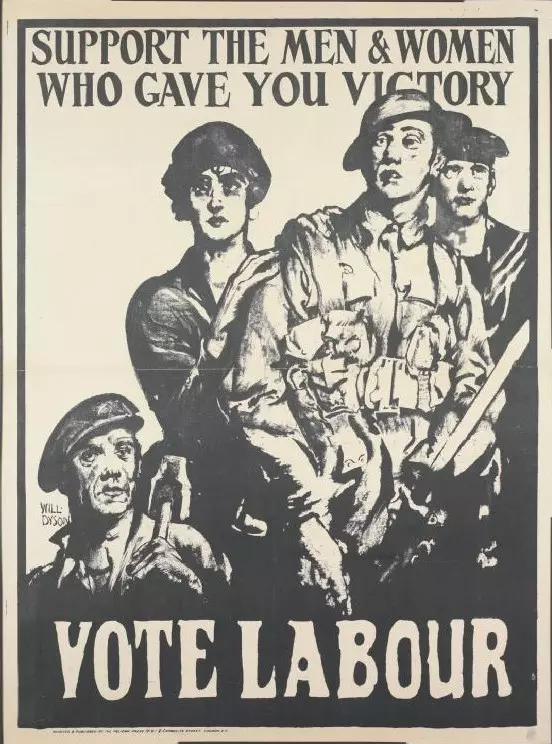
Similarly, after being raised in a working class Salvationist family, Sarah Baines dedicated her early life to the service of the Women’s Social and Political Union (WSPU) and then the Independent Labour Party in her life’s ambition to ‘fight for that which is better and nobler’.
Sarah Amos had, from the early days of her marriage, been committedly involved in several social purity campaigns such as those against the Contagious Diseases Acts of the 1860s. The leader of these campaigns, Josephine Butler, went on to work closely with Florence and Bramwell Booth in Salvation Army Women’s Social Services, and also with William Thomas Stead in the Maiden Tribute of Modern Babylon, all of whom Sarah also became connected to through her philanthropic and political activism.Moreover, beyond Salvationist support of gender equality, The Salvation Army appears to have had an additional impact upon the suffrage campaign through its innovative methods of recruitment. In particular, the Pankhursts’ methods to rally support for the WSPU bear an uncanny resemblance to those employed by the Booths to promote The Salvation Army in the late 19th century.
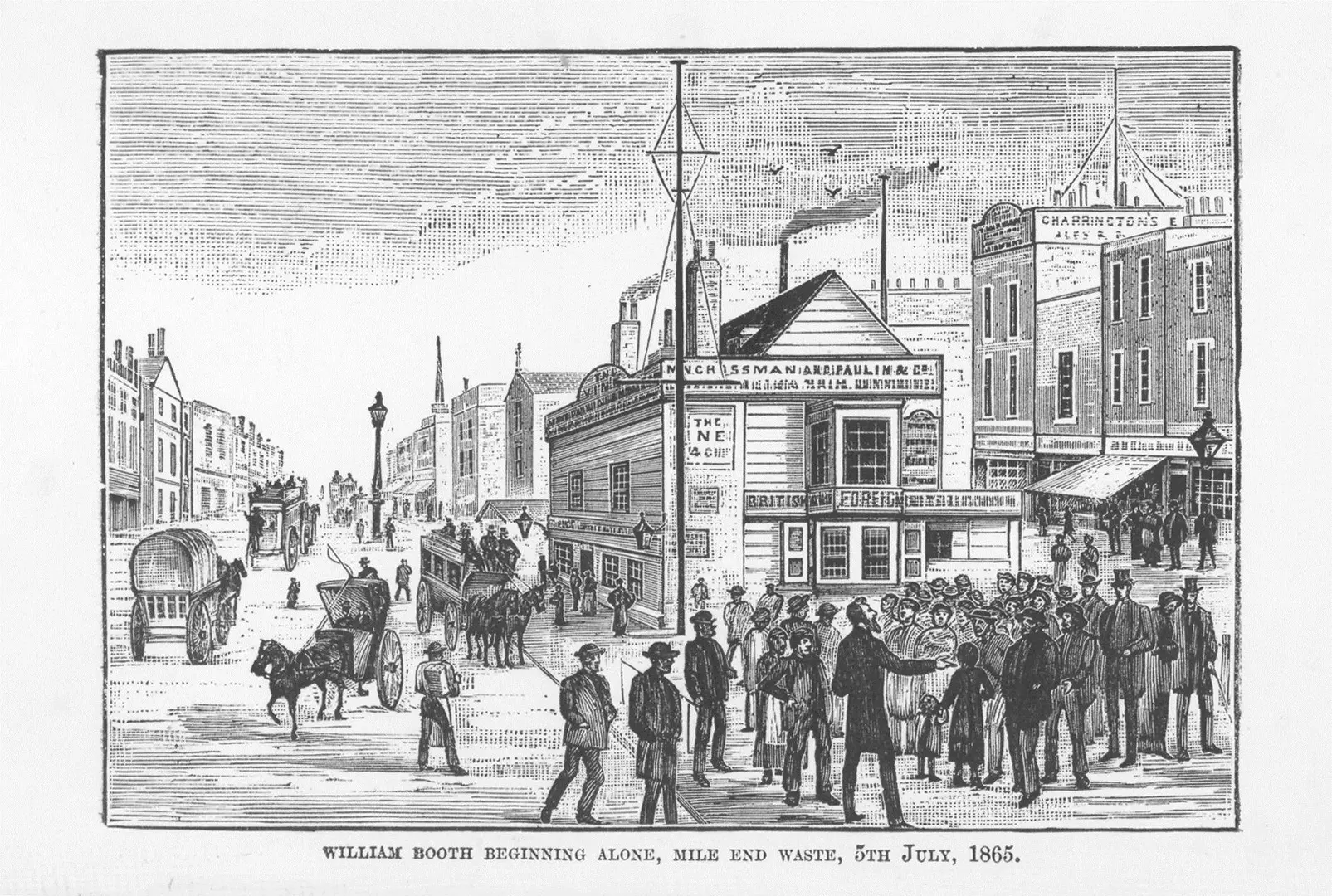
Open air meetings, promotional newspapers, door-to-door pamphlet sales and processions are just some of the methods adopted by first wave feminists after they had proved successful for The Salvation Army. In her autobiography, ‘My Own Story’, Emmeline Pankhurst explicitly attributes her inspiration for these approaches to The Salvation Army.
‘We adopted Salvation Army methods and went out into the highways and the byways after converts…just as the Booths and their followers took religion to the street crowds…we took suffrage to the general public’.
Similarly, in a letter to her sister Sylvia in 1953, Christabel praised the structuring and leadership of The Salvation Army, stating that ‘General Booth was wise, I believe, to run the Salvation Army that way’, and drawing direct comparisons between methods employed by The Salvation Army to those subsequently adopted by the WSPU.
What is evident from the experiences of these women and from the similarities in these movements methodologies is that while on the surface The Salvation Army, The Women’s Movement and the Labour Movement stood independently for religious salvation, gender politics and socialism, what they all had in common were strong moral causes that were catalysed into campaigns as a result of an emerging working class consciousness. Modern historian Jacqueline Devries has encapsulated this impact in her analysis that ‘with strict observance of sex equality among its members, as well as commitment to the ideals of Christian Socialism, the Salvation Army caught the imagination of a generation of socially conscious middle-class women who had come of age during the 1870s and 1880s’. From this investigation it seems fair to say that the Booths’ policies on gender equality amongst their religious ministry and their focus on relieving the effects of poverty connected The Salvation Army to key feminist and socialist principles that came to fruition in the Victorian era. While it is difficult to conclude that The Salvation Army enthusiastically supported this political campaign, its philanthropic and egalitarian ideologies attracted followers with values that strongly complimented those that motivated the first wave feminist suffrage campaign.
Chloe
February 2018
Read other blogs from the Heritage Centre
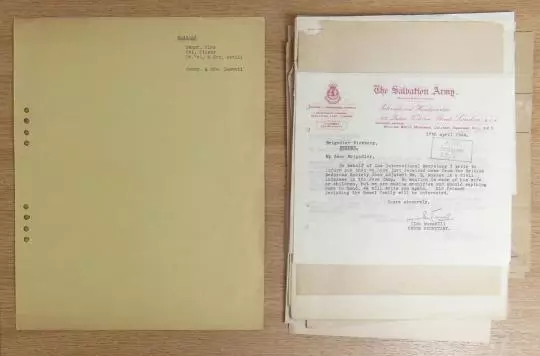
Sweden saves the day!
One of my first projects as the new archive assistant late last year was to catalogue nineteen boxes of correspondence pertaining to The Salvation Army’s provisional International Headquarters during the Second World War…

A world so close and yet so far away...
Some reflections on the Sport and General Press Agency photographs of the Second World War...
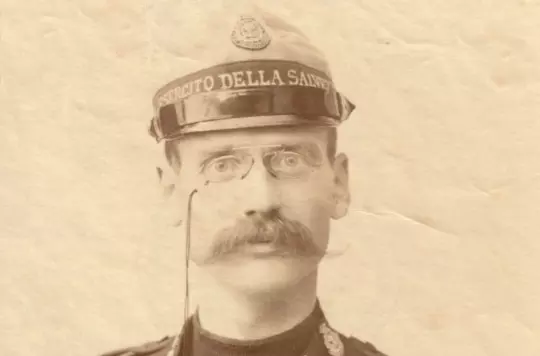
The Swiss Diary of Lieutenant R G Thonger
In 2017, The Salvation Army International Heritage Centre purchased the manuscript diary of a Salvation Army officer who had served in Switzerland in the 1880s...
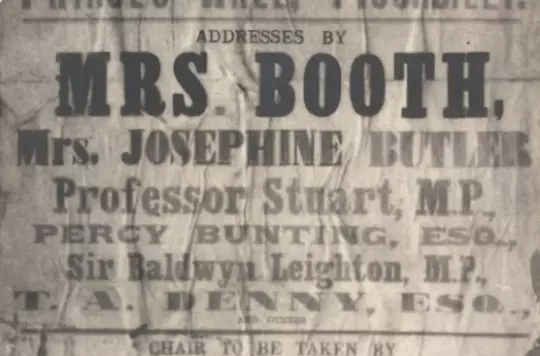
Josephine Butler, Florence Booth and 'The Maiden Tribute of Modern Babylon'
Identified by some as 'the patron saint of prostitutes', Josephine Butler inhabits an integral place among first wave feminist reformers...